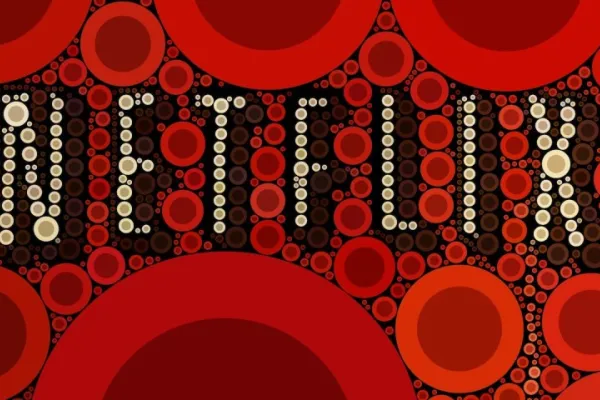 Details
Details
Native advertising can be a great way for companies to reach a target audience and create a relationship with them. Much more efficient than working with traditional advertising, no matter if it’s print, radio or TV or in different digital versions, like display advertising. But success depends on getting the most out of the investment.
I’ve put together five tips that in my experience will help brands do just that.
What is native advertising?
Let’s start by agreeing on what native advertising is. Here’s IAB’s definition: ”Paid ads that are so cohesive with the page content, assimilated into the design, and consistent with the platform behavior that the viewer simply feels that they belong.”
Ok, now that we all know what we are talking about, here are my five tips:
1. Create a plan
To succeed with native advertising you need to decide what you want to accomplish, your goals, and whom you are targeting. That in turn leads to understanding what your target audience finds interesting and relevant, since that will be topics for your native ads. You also need to make sure there are people in your own organization that can do the work (that doesn’t preclude doing the content production externally). And if one of the objectives is to drive traffic to your own sites you have to make sure there’s good content and landing pages already in place. Finally you need to define what to measure.
A strategy will address all of this, and that’s the best way to start. If you don’t have a plan you will find it difficult to create high quality content consistently, and in addition you risk unnecessary costs because of bad planning and inefficient content creation.
It’s tempting to leave all this to someone else, like an agency. To me, working with media agencies and content agencies has mostly been a positive experience, but you have to own the strategy yourself. You’re the only one that can connect the work you’re doing in native advertising back to your business goals and owning the relationship to customers and experts that you want to draw on when creating content. Get all the help you need with the execution and production, but always stay on top of the strategy.
READ MORE: How to create a native advertising strategy
2. Get to know the platform
Deciding which publisher to work with is very important. You have to make sure your target groups spends time there, and are prepared to interact with you. You also need to find out what type of content works best on the platform – everything from language to length and structure. Finally you want to make sure you get access to the user data the publisher has collected so you can adapt both the content and publishing process to their needs.
If you pick a random media platform or let someone else decide where to publish there’s a great risk that your native content won’t work or be ignored by the audience. That’s one reason why I’m not a fan of programmatic native advertising. It’s not enough to adapt the content to the target audience, you need to adapt it to the platform as well.
READ MORE: The 5 Best Native Advertising Platforms Right Now
3. Be active
Unlike other kinds of digital ads you can tweak and constantly improve native ads. Just like a modern newsroom is always trying to improve on the editorial content to achieve optimal exposure. You can do the same, at least if it’s a site that offers native ads on the same CMS as the editorial content. Making use of this opportunity will not only improve how the ads are doing, you will learn a lot about your target audience as well.
Because of this you need to have people in your own organization with time and mandate to work with the ads and the publisher. By doing so you will learn a lot not just about the native content, like what angles and formats work best, but also about the target group in general. How they interact with links, what conversion methods that work best and so on. These are valuable insights that you can use on your own web site.
READ MORE: 4 Ad Headline Generators You Need to Try Today
4. Be patient
Native advertising, just like content marketing, is a long-term commitment. It seldom pays of quickly. You need to be prepared for that. In particular you have to manage expectations in your own organization on what native can and cannot do.
You need a budget that can handle an investment in native ads for a certain period of time. Doing one or two pieces of native content and expecting a measureable result is not very realistic. The audience has to get used to your presence on the platform and learn that you have valuable stories to tell them.
This is one reason why it’s a good idea to combine native advertising with content marketing in your own channels. By having great content on your own platforms you can convince those that have made the journey via native ads to your own sites that it’s worth their while to come back.
READ MORE: Visual Ads Masterclass: 8 Essential Visual Techniques for Advertising
5. Dare to be customer-centric
When you or your agency creates the content for the native ads, make sure it’s really grounded in the needs of your target audience, and very relevant to the, It’s far too common to come across native ads that have an inside-out perspective or tries to close a deal straight away. Neither works well in my experience. Rather, it’s the companies that are brave enough to really focus on what’s important to their target audience and does this consistently that really succeeds with their native campaigns.
The best cases of native ads that I’ve come across tries to be just as relevant and engaging as the editorial content. That’s what you should aim for.
So there you have them - my five tips to companies wanting to do native advertising. I very much look forward to hearing your views on them – do you agree with my reasoning?
READ MORE: The 12 Best Native Advertising Examples

Pontus Staunstrup is Head of Content strategy and Social media at PostNord Group. Prior to that he was Content strategy director at one of Sweden’s leading content agencies. He has extensive experience of working with content marketing and content strategy as well as social media for a number of Swedish and international companies in both B2B and B2C
Pontus is also a frequent speaker and writer on topics like native advertising, digital strategy and content marketing.
He is a member of PostNord’s steering group for native advertising, as well as lead strategist and analyst.
Follow Pontus on Twitter


